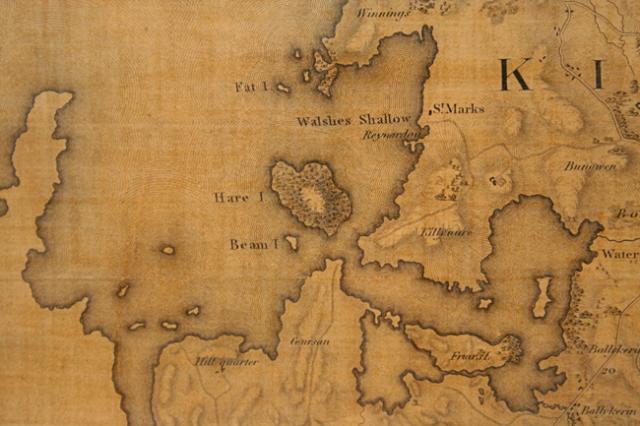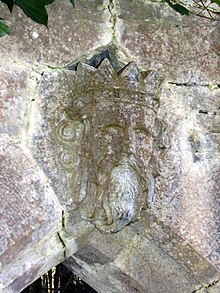Sacred Isle of Iona
Iona (
Scottish Gaelic:
Ì Chaluim Chille) is a small island in the
Inner Hebrides off the western coast of
Scotland. It was a centre of
Irish monasticism for four centuries and is today renowned for its tranquility and natural beauty. It is a popular tourist destination. Its modern
Gaelic name means "Iona of (Saint)
Columba" (formerly anglicised "Icolmkill").
Etymology
The
Hebrides have been occupied by the speakers of several languages since the
Iron Age, and as a result many of the names of these islands have more than one possible meaning.Nonetheless few, if any, can have accumulated so many different names over the centuries as the island now known in English as "Iona".
The earliest forms of the name enabled place-name scholar
William J. Watson to show that the name originally meant something like "yew-place".The element
Ivo-, denoting "
yew", occurs in Ogham inscriptions (
Iva-cattos [genitive],
Iva-geni [genitive]) and in Gaulish names (
Ivo-rix,
Ivo-magus) and may form the basis of early Gaelic names like
Eogan (ogham:
Ivo-genos).It is possible that the name is related to the mythological figure,
Fer hÍ mac Eogabail, foster-son of
Manannan, the forename meaning "man of the yew".
Mac an Tàilleir (2003) lists the more recent Gaelic names of
Ì,
Ì Chaluim Chille and
Eilean Idhe noting that the first named is "generally lengthened to avoid confusion" to the second, which means "Calum's (i.e. in latinised form "Columba's") Iona" or "island of Calum's monastery".The possible confusion results from "ì", despite its original etymology, becoming a Gaelic noun (now obsolete) meaning simply "island".
Eilean Idhe means "the isle of Iona", also known as
Ì nam ban bòidheach ("the isle of beautiful women"). The modern English name comes from an 18th century misreading of yet another variant,
Ioua,which was either just Adomnán's attempt to make the Gaelic name fit Latin grammar or else a genuine derivative from
Ivova ("yew place").
Ioua's change to
Iona results from a transcription mistake resulting from the similarity of "n" and "u" in
Insular Minuscule.
Despite the continuity of forms in Gaelic between the pre-Norse and post-Norse eras, Haswell-Smith (2004) speculates that the name may have a
Norse connection,
Hiōe meaning "island of the den of the brown bear", "island of the den of the fox", or just "island of the cave".The medieval English language version was "Icolmkill" (and variants thereof).
Table of earliest forms (incomplete)FormSourceLanguageNotesIoua insula
Adomnán's
Vita Columbae (c. 700)LatinAdomnán calls
Eigg Egea insula and Skye
Scia insulaHii, Hy
Bede's
Historia ecclesiastica gentis AnglorumLatinEoa, Iae, Ie,
I Cholaim Chille
Annals of UlsterIrish, LatinU563
Nauigatio Coluim Chille ad Insolam Iae
"The journey of St Columba to Í"
U716
Pascha comotatur in Eoa ciuitate
"The date of Easter is changed in the monastery of Í") U717
Expulsio familie Ie
"The expulsion of the community of Í"
U778
Niall...a nn-I Cholaim Chille
"Niall... in Í Cholaim Chille"Hi, Eu
Lebor na hUidreIrish
Hi con ilur a mmartra
"Hi with the multitude of its relics"
in tan conucaib a chill hi tosuċ .i. Eu
"the time he raised his church first i.e. Eu"Eo
Walafrid Strabo (c. 831)Latin
Insula Pictorum quaedam monstratur in oris fluctivago suspensa salo, cognominis Eo
"On the coasts of the Picts is pointed out an isle poised in the rolling sea, whose name is
Eo"Euea insula
Life of St Cathróe of MetzLatin
Folk etymology
Murray (1966) claims that the "ancient" Gaelic name was
Innis nan Druinich (the isle of
Druidic hermits") and repeats a Gaelic story (which he admits is
apocryphal) that as Columba's coracle first drew close to the island one of his companions cried out
"Chì mi i" meaning "I see her" and that Columba's response was "Henceforth we shall call her Ì".
Ancient Stones of Iona - YouTube
On the Sacred Isle of Iona stands the church of St Columba. Next to the Church is the Ancient Royal Burial Ground of Kings of some Ard Righ Kings of Ireland, Ard Righ Kings of Pictland, Norweigen Kings and King Alpin and his two sons King Kenneth I of Alpin and King Donald I of Alpin and their descendents of Kenneths line going to MacBeth and from Donalds line which includes some of my ancestors named MacKinnon.






